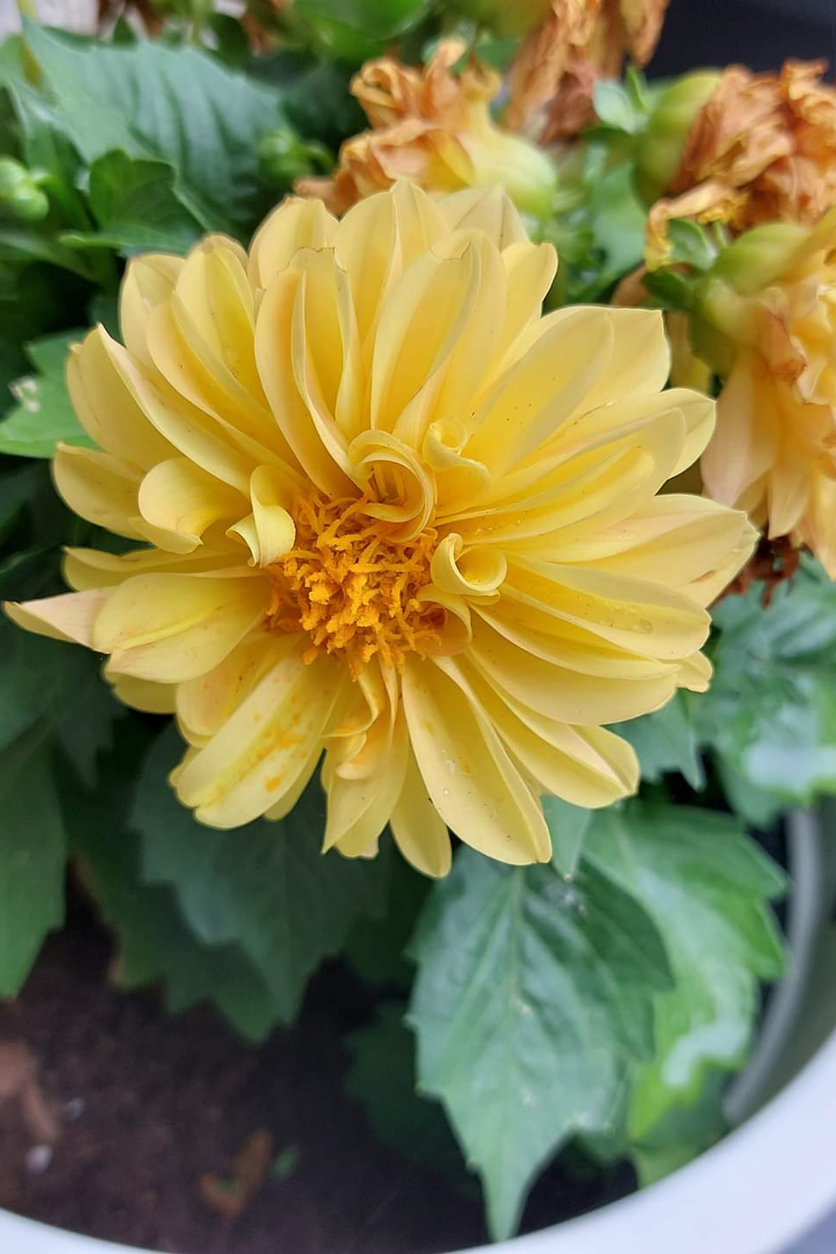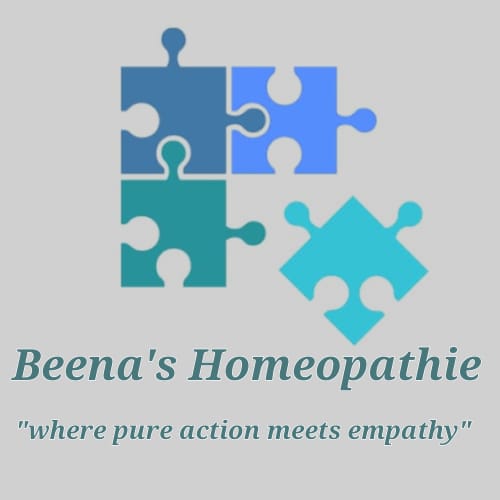
Allergic Rhinitis
Definition:
We all know allergies but what is the actual definition of allergy. Well allergy is a sudden hypersensitive reaction that presents itself with a number of symptoms when it comes in contact with an allergen.
Now what ia an allergen? An allergen is an agent which is harmful to a sensitive or allergic person but does not have any effect on the other.
Some of the allergens are: Treen pollen, grasspollen, dust mites, animal dander, cat salivea and mold
During certain times of the year, pollen can be especially problematic. Tree and flower pollens are more common in the spring. Grasses and weeds produce more pollen in the summer and fall.
The Symptoms of allergic rhinitis are
- Sneezing
- a runny nose
- a stuffy nose
- an itchy nose
- coughing
- a painful or scratchy throat
- itchy eyes
- watery eyes
- frequent headaches
- excessive fatigue
Cause of allergic rhinitis
When the body comes into contact with an allergen, it releases histamine, which is a natural chemical that defends your body from the allergen. Release of histamine is the causative reason of allergic rhinitis.
Types of allergic rhinitis
The two types of allergic rhinitis are seasonal and perennial. Seasonal allergies usually occur during the spring and fall season and are typically in response to outdoor allergens like pollen. Perennial allergies can occur year round, or at any time during the year in response to indoor substances, like dust mites and pet dander.
Risk factors for allergic rhinitis
Triggering factors for allergic rhinitis are
- cigarette smoke
- chemicals
- cold temperature
- humidity
- wind
- air pollution
- hairspray
- perfumes
- colognes
- wood smoke
- fumes
How to diagnose allergic conditions:
A skin prick test is one of the most common. Several substances are placed onto your skin to see how your body reacts to each one. Usually, a small red bump appears if you’re allergic to a substance.
A blood test, or RAST test. The RAST measures the amount of immunoglobulin E antibodies to particular allergens in your blood.
Homoeopathic treatment for allergic rhinitis
The Homeopathic remedies for allergy not only helps in providing relief in acute attacks of allergy, but also works to cure the allergy by extracting the underlying root cause. The Homeopathic treatment for allergy is completely safe, since the homeopathic medicines are sourced out of natural substances and there are no toxins involved. The natural Homeopathic remedies that are best suited are chosen on the basis of the symptoms and characteristics narrated by each patient.

Hair Loss (Alopecia)
Hairloss is a natural process. All human are supposed to lose a certain amount of hairs everyday but when this process or the ratio of hairloss becomes more than the natural expected ratio then it’s a medical condition . We call this medical condition as baldness.
Baldness, hairloss or alopecia typically refers to excessive hair loss from your scalp. Hair loss withold age and genetic background is the most common cause of baldness. Stress plays a very crucial role here. Nowadays even young people in their late 20s are experiencing hairloss
Symptoms
Signs and symptoms of hair loss may include:
- Male pattern baldness: This is the most common type of hair loss, affecting people as they age. In men, hair often begins to recede at the hairline on the forehead. Women typically have a broadening of the part in their hair. An increasingly common hair loss pattern in older women is a receding hairline (frontal fibrosing alopecia).
- Bald spots in circular patches/ Alopecia aereta: Some people lose hair in circular or patchy bald spots on the scalp, beard or eyebrows. Your skin may become itchy or painful before the hair falls out. It is due to an autoimmune disorder.
- Hairloss due to stress. A physical or emotional shock can cause hair to loosen. Handfuls of hair may come out when combing or washing your hair or even after gentle tugging. This type of hair loss usually causes overall hair thinning but is temporary.
- Hairloss due to treatments: Chemotherapy, a treatment during cancer can also cause hairloss.
- Circular patchy hairloss. This is a sign of ringworm. It may be accompanied by broken hair, redness, swelling and, at times, oozing.
Causes
People typically lose 50 to 100 hairs a day. This usually isn’t noticeable because new hair is growing in at the same time. Hair loss occurs when new hair doesn’t replace the hair that has fallen out.
Hair loss is typically related to one or more of the following factors:
- Genetic: The most common cause of hair loss is a hereditary condition that happens with aging. This condition is called androgenic alopecia, male-pattern baldness and female-pattern baldness. It usually occurs gradually and in predictable patterns — a receding hairline and bald spots in men and thinning hair along the crown of the scalp in women.
- Hormonal changes and medical conditions. A variety of conditions can cause permanent or temporary hair loss, including hormonal changes due to pregnancy, childbirth, menopause and thyroid problems. Medical conditions include alopecia areata which is immune system related and causes patchy hair loss, scalp infections such as ringworm, and a hair-pulling disorder called trichotillomania
- Medications and supplements. Hair loss can be a side effect of certain drugs, such as those used for cancer, arthritis, depression, heart problems, gout and high blood pressure.
- Radiation therapy to the head. The hair may not grow back the same as it was before.
- A very stressful event. Many people experience a general thinning of hair several months after a physical or emotional shock. This type of hair loss is temporary.
- Hairstyles and treatments. Excessive hairstyling or hairstyles that pull your hair tight, such as pigtails or cornrows, can cause a type of hair loss called traction alopecia. Hot-oil hair treatments and permanents also can cause hair to fall out. If scarring occurs, hair loss could be permanent
Risk factors
A number of factors can increase your risk of hair loss, including:
- A family history of balding on your mother’s or father’s side
- Age
- Significant weight loss
- Certain medical conditions, such as diabetes and lupus
- Stress
- Poor nutrition
Homoeopathic Treatment for hairloss:
Homeopathy is one of the most safe, gentle popular and holistic systems of medicine. The remedy is based upon the theories of classical homoeopathy which requires an extensive and elaborate case taking, repertorization, individualization and symptoms similarities and finally approaching a single constitutional remedy by using holistic approach.
This is the special and unique method through which a state of complete health can be regained by removing all the sign and symptoms from which the patient is suffering.
The aim of homeopathy is not only to treat the hair loss but to address all the underlying causes and individual susceptibility.
Hair-loss is again just an indicator that there is something not well in your body. The hairs may fall due to a local infection or due to a systemic disorder or deficiency. The treatment also varies accordingly from person to person.

Menorrhagia or Heavy Menses
Menorrhagia is a medical term used for abnormally heavy or prolonged bleeding.
During menorrhagia, you can’t maintain your usual activities because you have so much blood loss and cramping. You can experience dizziness, fatigue and irritation.
Symptoms
Signs and symptoms of menorrhagia may include:
- You need to change your napkins almost every hour.
- You need to change sanitary protection during the night which disturbs your sleep.
- Bleeding can last longer than a week.
- Passing large blood clots.
- Your daily activities due to heavy menstrual flow
- Symptoms of anaemia, such as tiredness, fatigue or shortness of breath
Causes
In some cases, the cause of heavy menstrual bleeding is unknown, but a number of conditions may cause menorrhagia. Common causes include:
- Hormone imbalance. A normal menstrual cycle, is a balance between the hormones of estrogen and progesterone which regulates the build up of the lining of the uterus (endometrium), which is shed during menstruation. If a hormone imbalance occurs, the endometrium develops in excess and eventually sheds by way of heavy menstrual bleeding.
A number of conditions can cause hormone imbalances, including polycystic ovary syndrome (PCOS), obesity, insulin resistance and thyroid problems.
- Ovarian dysfunction. If your ovaries don’t release an egg (ovulate) during a menstrual cycle (anovulation), your body doesn’t produce the hormone progesterone, as it would during a normal menstrual cycle. This leads to hormone imbalance and may result in menorrhagia.
- Fibroids of the uterus. These noncancerous (benign) tumors of the uterus appear during your childbearing years. Uterine fibroids may cause heavier than normal or prolonged menstrual bleeding.
- Polyps. Small, benign growths on the lining of the uterus (uterine polyps) may cause heavy or prolonged menstrual bleeding.
- Use of Intrauterine device (IUD). Menorrhagia is a well-known side effect of using a nonhormonal intrauterine device for birth control. Your doctor will help you plan for alternative management options.
- Adenomyosis. This condition occurs when glands from the endometrium become embedded in the uterine muscle, often causing heavy bleeding and painful periods.
- Polyps. Small, benign growths on the lining of the uterus (uterine polyps) may cause heavy or prolonged menstrual bleeding.
- Complications of pregnancy. A single, heavy, late period may be due to a miscarriage. Another cause of heavy bleeding during pregnancy includes an unusual location of the placenta, such as a low-lying placenta or placenta previa.
- Cancer. Uterine cancer and cervical cancer can al cause excessive menstrual bleeding, especially if you are postmenopausal or have had an abnormal Pap test in the past.
- Inherited bleeding disorders. Some bleeding disorders — such as von Willebrand’s disease, a condition in which an important blood-clotting factor is deficient or impaired — can cause abnormal menstrual bleeding.
- Medications. Certain medications, including anti-inflammatory medications, hormonal medications can also contribute to heavy or prolonged menstrual bleeding.
- Other medical conditions. A number of other medical conditions, including liver or kidney disease, may be associated with menorrhagia.
Risk factors
Risk factors vary with age
Menorrhagia in adolescent girls is typically due to anovulatory cycles. Adolescent girls are prone to having anovulatory cycles in the first year after their first menstrual period (menarche).
Menorrhagia in older reproductive-age women is typically due to uterine pathology, including fibroids, polyps and adenomyosis. However, other problems, such as uterine cancer, bleeding disorders, medication side effects and liver or kidney disease could be contributing factors.
Complications
Excessive or prolonged menstrual bleeding can lead to other medical conditions, including:
- Anemia.
- Severe pain.
- Lethargy
- Depression due to low energy.
Homoeopathic treatment for Menorrhagia:
Homoeopathy offers a natural gentle and holistic solution to women who suffer from this condition.
The underlying cause along with the symptoms bleeding are handled by deriving out the constitutional medicine from the case.
Homoeopathy is well suited to women who could bring balance not only at their physical level but also to their emotional well being.
There are numerous homoeopathic remedies for women and every women is considered to be diffferent from the other.
After a thorough case taking and repertorization constitutional remedy will be given which will be unique and individualistic remedy to bring about holisitic cure.

PSORIASIS
Psoriasis is an autoimmune skin related disorder which is characterised by rashes with itchy, dry greyish or white patches and silvery scales. It is most commonly located on the knees, elbows, trunk and scalp.
Psoriasis is a common, long-term (chronic) disease which can be painful,irritating, interfere with sleep and make it hard to concentrate. The condition also tends to go through cycles, flaring for a few weeks or months, then subsiding for a while. The common triggers in people with a genetic predisposition to psoriasis include infections, cuts or burns, and certain medications.
Symptoms
Common signs and symptoms of psoriasis include:
- A patchy rash that can vary widely in its appearances from person to person. It could manifest from spots of dandruff-like scaling to major eruptions over much of the body
- Rashes can also vary in color, it could be shades of purple with gray scale on brown or Black skin and pink or red with silver scale on white skin
- Small scaling spots (commonly seen in children)
- Dry, cracked skin that may bleed
- Itching, burning or soreness
- Cyclic rashes that flare for a few weeks or months and then subside
Different types of Psoriasis:
- Plaque psoriasis. The most common type of psoriasis, plaque psoriasis are basically dry, itchy, raised skin patches (plaques) covered with scales. There may be few or many.
They are mainly located on the elbows, knees, lower back and scalp. The patches vary in color, depending on skin color. The affected skin might heal with temporary changes in color (post inflammatory hyperpigmentation), particularly on brown or Black skin.
- Nail psoriasis. Psoriasis can also affect fingernails and toenails causing pitting, abnormal nail growth and discoloration. Psoriatic nails might loosen and separate from the nail bed (onycholysis). Severe disease may cause the nail to crumble.
- Guttate psoriasis. Guttate psoriasis primarily affects young adults and children. It is usually triggered by a bacterial infection such as strep throat. It’s marked by small, drop-shaped, scaling spots on the trunk, arms or legs.
- Inverse psoriasis. Inverse psoriasis has its main seat of action on the skin folds of the groin, buttocks and breasts. It causes smooth patches of inflamed skin that worsen with friction and sweating. Fungal infections may trigger this type of psoriasis.
- Pustular psoriasis. Pustular psoriasis, is a rare type of psoriasis that causes clearly defined pus-filled blisters. It can occur in widespread patches or on small areas of the palms or soles.
- Erythrodermic psoriasis. The least common type of psoriasis, erythrodermic psoriasis can cover the entire body with a peeling rash that can itch or burn intensely. It can be short-lived (acute) or long-term (chronic).
Causes
Psoriasis is thought to be an autoimmune disorder that causes skin cells to grow faster than usual. In the most common type of psoriasis, known as plaque psoriasis, this rapid turnover of cells results in dry, scaly patches.
The cause of psoriasis isn’t fully understood. It’s thought to be an immune system problem where infection-fighting cells attack healthy skin cells. Researchers believe that both genetics and environmental factors play a role. The condition is not contagious.
Triggers of Psoriasis
Many people who are predisposed to psoriasis may be free of symptoms for years until the disease is triggered by some environmental factor. Common psoriasis triggers include:
- Skin infections or bacterial infections such as strep throat infection.
- Injury to the skin, such as a cut or scrape, a bug bite, or a severe sunburn
- Smoking or passive smoking. Heavy alcohol consumption.
- Certain medications — such as lithium, hypertensive drugs and antimalarial drugs
- Rapid withdrawal of oral or injected corticosteroids.
Risk factors
The main risk factors for psoriasis are:
- Genetic: Hereditary factors play a big role inn the development of psoriasis which can present itself in the child in his or her childhood years
- Smoking. Smoking tobacco not only increases the risk of psoriasis but also may increase the severity of the disease.
Complications
If you have psoriasis, you’re at greater risk of developing other conditions, including:
- Psoriatic arthritis, which causes pain, stiffness, and swelling in and around the joints
- Temporary skin colour changes (post-inflammatory hypopigmentation or hyperpigmentation) where plaques have healed
- Eye conditions, such as conjunctivitis, blepharitis and uveitis
- Obesity
- Type 2 diabetes
- High blood pressure
- Cardiovascular disease
- Other autoimmune diseases, such as celiac disease, sclerosis and the inflammatory bowel disease called Crohn’s disease
- Mental health conditions, such as low self-esteem and depression
Homoeopathic approach to Psoriasis:
Homeopathy is a safe, gentle and reliable method of treatment for Psoriasis
The best thing about homoeopathy is that it acts directly on the immune system and helps to balance it.
They can be used by people of all age groups.
Homeopathic medicines also are very beneficial for treating joint pains that are linked with Psoriasis (psoriatic arthritis).
Psoriasis is a chronic disorder and the causes are deep seated so even if you see improvements, it is advisable to carry on the treatment for few years to
